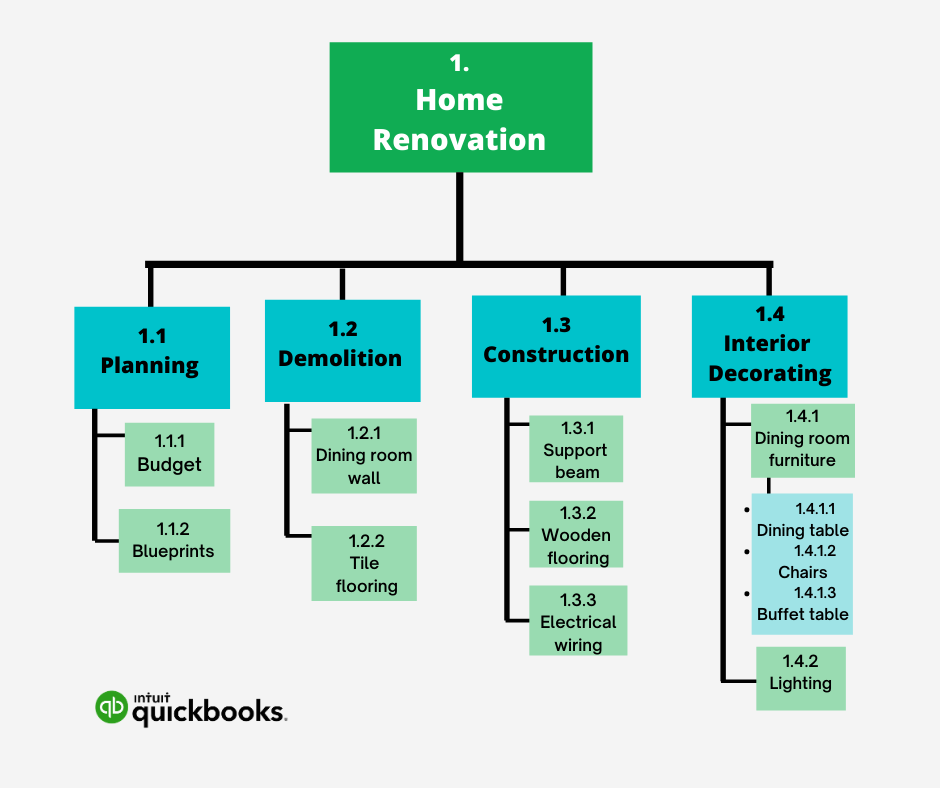Work Breakdown Structure Design Principles
One of the major design principles of creating a project’s WBS is the 100% rule. The work breakdown structure must illustrate 100% of the work required to complete the project in question.
Any work or responsibilities that fall outside of the project scope should not be included in the workflow. On the same note, missing any necessary tasks will create an incomplete structure under the 100% threshold. In either instance, too few requirements or too many can hamper the project’s efforts.
When constructing the WBS, it is crucial to remember that the structure captures the project’s outcomes and objectives, not the actions needed to complete the outcome. If listing actions, the tasks can overtake this diagram, as managers end up adding more work than they might otherwise need to achieve those results, and covering more than the needed 100%. Ditching the use of verbs while capturing all planned deliverables is one of the best ways to ensure the WBS is accurately portraying the required workload.
There three main ways a project manager can structure their WBS:
- Phase-based WBS: This structure is defined and categorized based on the project’s phases, with subcategories stemming from each phase with the actions required.
- Deliverable-based WBS: This structure is defined and categorized based on the project’s deliverables and necessary results.
- Responsibility-based WBS: This structure is defined and categorized based on the project’s team members and their required responsibilities.


